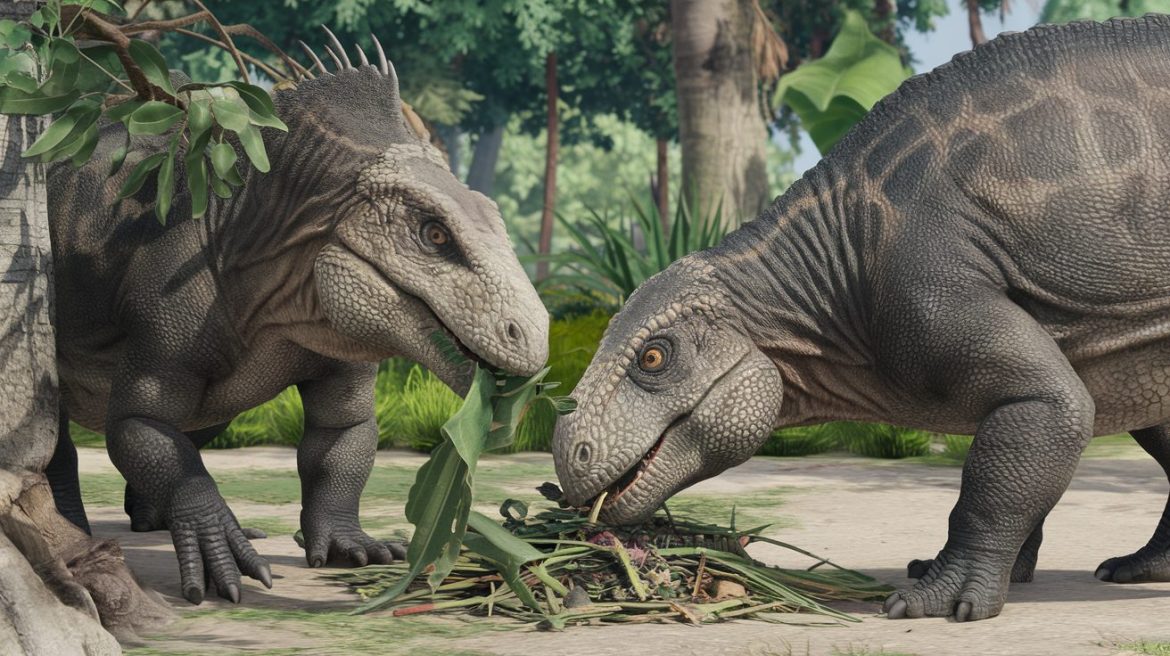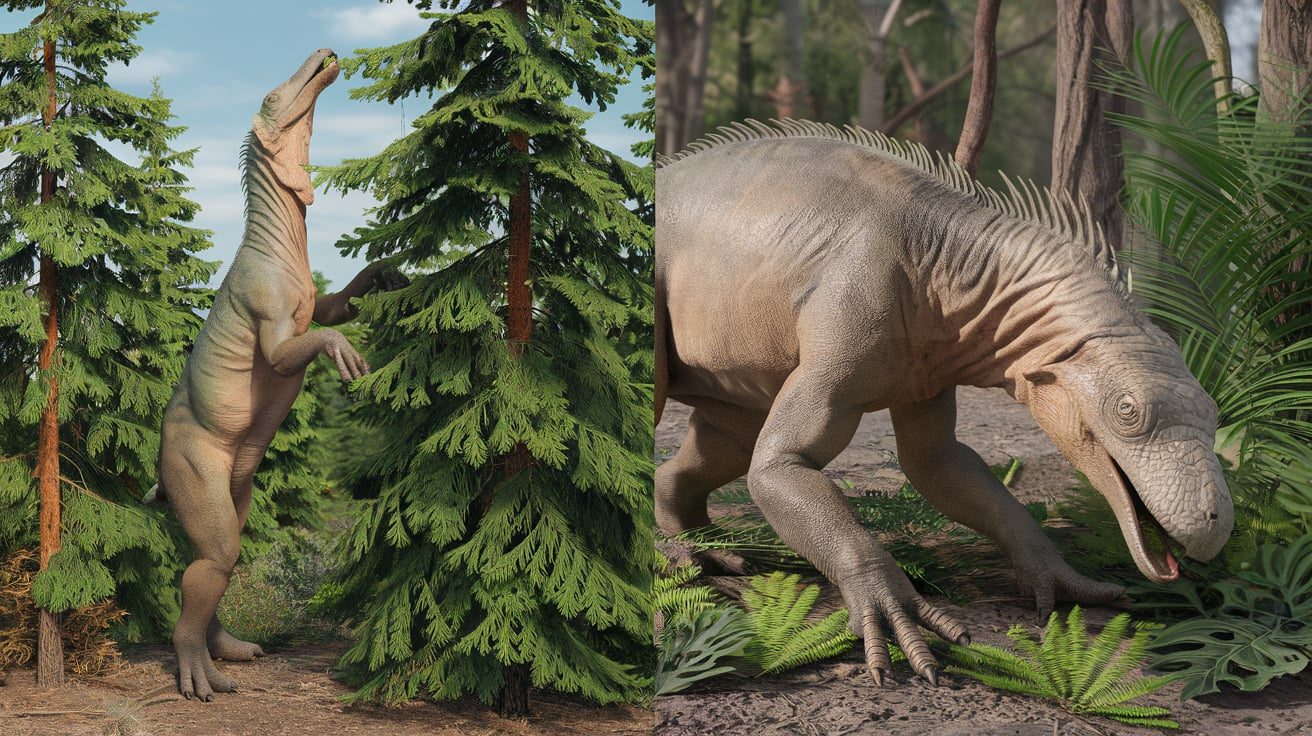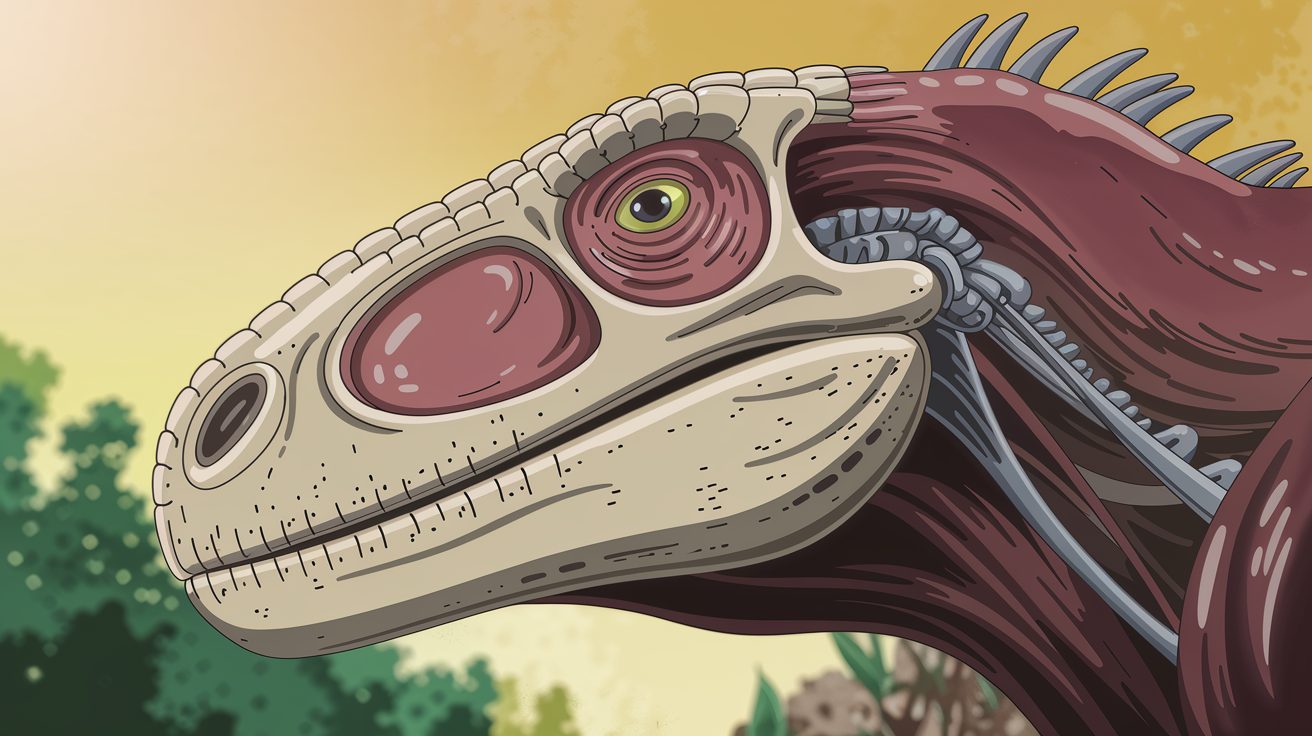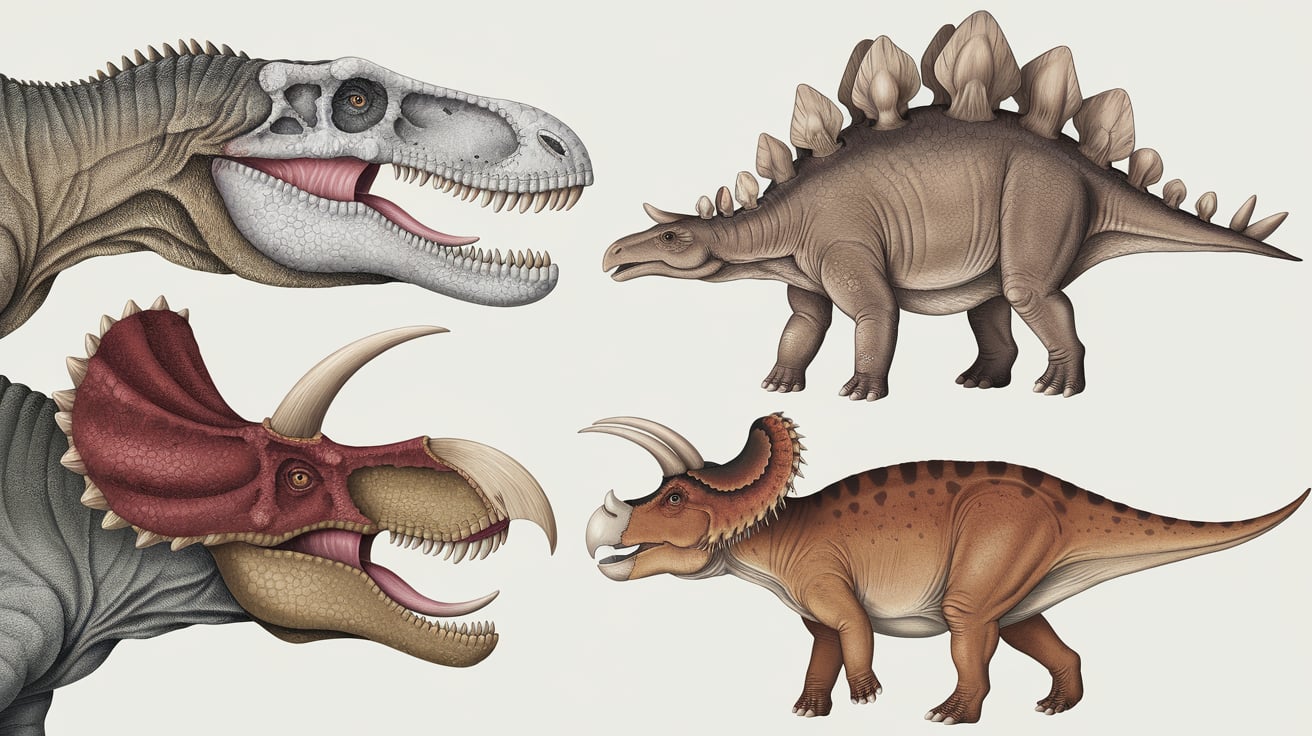The Iguanodon is one of the most significant dinosaurs of the Mesozoic era. Its distinctive thumb spike and powerful jaws have captivated paleontologists since its discovery in the 1800s.
But what fueled these massive creatures that roamed Earth over 125 million years ago?
Understanding the Iguanodon’s diet provides crucial insights into how these animals survived and how entire prehistoric ecosystems functioned.
This article will review what Iguanodons ate, how we know about their dietary preferences, and what their plant-based menu reveals about their evolutionary adaptations and ecological role.
Let’s continue with the next section of your blog post about Iguanodons.
Who Was the Iguanodon?
The Iguanodon was a large herbivorous dinosaur that lived approximately 125-122 million years ago during the Early Cretaceous period.
Growing up to 10 meters (33 feet) in length and weighing around 4-5 tons, these dinosaurs were impressive mid-sized herbivores.
Their most distinctive feature was the conical spike on their thumbs, which likely served multiple purposes, from defense to gathering food.
Iguanodons walked on two and four legs, adapting their posture based on their activity. When moving quickly, they would run on their powerful hind legs but drop to all fours while feeding on low vegetation.
Their strong forelimbs and flexible wrists let them effectively grasp and manipulate plant material.
Iguanodon’s Habitat
Iguanodon fossils have been discovered across several continents, with significant finds in England, Belgium, Germany, Spain, and North America.
This wide distribution suggests they were highly successful dinosaurs that adapted to various environments.
During the Early Cretaceous, these regions had warm, seasonal climates, extensive forests, fern prairies, and river systems.
The landscape was dominated by primitive flowering plants, conifers, cycads, and ferns – all potential food sources for these versatile herbivores.
The widespread distribution of Iguanodon fossils across different geographical areas indicates they were highly adaptable dinosaurs that could thrive in diverse environments, from coastal plains to inland forests.
Iguanodon Feeding Habits: What Was on the Menu?
Have you ever wondered what fueled these massive prehistoric creatures? Iguanodons weren’t your typical dinosaurs.
These Early Cretaceous giants combined specialized physical features with efficient eating strategies to thrive in their ancient world.
These plant-eaters used their distinctive thumb spikes and specialized beak-like mouths to handle the tough vegetation of their time.
What made them particularly successful was their ability to process plants more thoroughly than many of their dinosaur contemporaries.
Let’s see what these creatures ate and how their unique anatomy helped them become among the most successful herbivores of their era.
Preferred Vegetation Types
Iguanodons were committed herbivores, relying completely on plants for nourishment. The Early Cretaceous period offered them a buffet of vegetation to choose from.
Fossil evidence and careful examination of their teeth and digestive structures reveals that Iguanodons typically consumed:
- Ferns and horsetails that grew abundantly in their habitats
- Cycads and other gymnosperm plants with their tough, fibrous leaves
- Conifer needles and shoots, providing year-round sustenance
- Early flowering plants, which were beginning to appear in their world
What’s particularly interesting is how Iguanodons adapted to this plant-heavy diet.
Their specialized digestive systems allowed them to extract nutrients from fibrous plants that other dinosaurs couldn’t process effectively.
Feeding Techniques and Posture
One of the most practical advantages Iguanodons had was their versatility in feeding positions.
These dinosaurs could shift between walking on two legs and moving on all fours, giving them access to food at different heights:
- Standing on hind legs, they could reach vegetation up to 5 meters high
- On all fours, they could efficiently browse ground-level plants without wasting energy
Paleontologists have studied their neck structure in detail. It provided enough flexibility to reach vegetation in various positions.
This meant they didn’t need to move their entire body to access different food sources constantly, an efficient approach that conserved energy.
Their powerful front limbs, complete with that iconic thumb spike, weren’t just for show.
Adaptations to Diet
The Iguanodon’s dietary preferences drove evolutionary adaptations that shaped virtually every aspect of their anatomy.
These specialized features developed over millions of years as these dinosaurs co-evolved with the plant communities of their time.
Their skull and jaw structure also evolved to support this specialized feeding strategy:
- A narrow, beak-like snout for precise cropping of vegetation
- Powerful jaw muscles attached to reinforced skull structures
- A hinge-like jaw joint allows slight lateral movement for grinding
- Cheek pouches to prevent food from falling out during processing
Their distinctive thumb spike once thought to be a defensive weapon, may have served multiple purposes related to feeding.
This specialized digit could have been used to break into tough plant material, strip bark from trees, or help manipulate branches to access preferred food items.
Iguanodon’s Diet Compares to Other Dinosaurs
The iguanodon’s diet differed from that of other dinosaurs due to its specialized combination of a beak-like mouth and thumb spike for gathering plants.
Comparison with Other Herbivores
When examining the Iguanodon’s dietary habits in context, fascinating differences emerge between these versatile herbivores and other plant-eating dinosaurs of the Mesozoic era.
Here’s a helpful reference guide showing how Iguanodons compared to other major plant-eating dinosaurs:
| Dinosaur Group | Tooth Structure | Bite Capability | Preferred Vegetation |
|---|---|---|---|
| Stegosaurus | Simple leaf-shaped | Relatively weak | Softer vegetation |
| Iguanodon | Intermediate dental development | Moderate grinding ability | Varied plant material |
| Triceratops | Shearing dental batteries | Strong processing power | Tougher, fibrous plants |
| Hadrosaurs | Complex dental batteries (up to 1,400 teeth) | Advanced Grinding | Wide range of plant materials |
Keep in mind that these are general comparisons. The actual feeding mechanisms varied based on species, habitat, and time period.
The important thing is understanding how Iguanodons represented a middle stage in plant-processing evolution.
The balance between skull structure, tooth morphology, and digestive efficiency gave each herbivorous.
Wrapping It Up!
The Iguanodon’s diet offers insight into prehistoric ecosystems. With their specialized teeth and feeding methods, these plant-eaters form an important link between early ornithopods and later hadrosaurs.
Research on their food choices helps scientists understand these specific dinosaurs and how plants and animals developed together during the Early Cretaceous period.
Their physical features, from rows of teeth to thumb spikes, show how food requirements can change body structure over time.
As major plant consumers, Iguanodons affected their surroundings by eating while providing food for predators. Finding their fossils across different continents shows how well their plant-eating lifestyle worked.
The Iguanodon’s eating habits remind us that extinct animals were part of ecological systems that continue to influence our world today.
Frequently Asked Questions
What was the Iguanodon’s Diet?
Iguanodons were herbivorous dinosaurs from the Early Cretaceous. They used specialized teeth and strong jaws to process tough plant material for nutrition.
What Plants Did Iguanodon Eat?
Iguanodons mostly ate ferns, cycads, and conifers. Their beak-like mouths cropped vegetation, while cheek teeth ground tough plant fibers.
Was the Iguanodon a Predator or Prey?
Iguanodons were prey for large theropods like Neovenator and Baryonyx. Although herbivores, they could weigh 4-5 tons and had thumb spikes that likely served as defense against predators.
Are Iguanodons Aggressive?
Fossil evidence suggests Iguanodons were non-aggressive, favoring defensive over offensive behaviors. Their thumb spikes likely aided in food gathering and self-defense when threatened.





